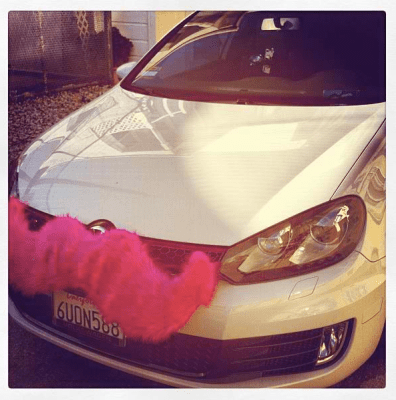It’s been just eight weeks since Zimride’s ride-sharing service, Lyft, was launched in beta, providing San Francisco users a low-cost alternative to cabs and Ubers. Since then, the service has grown a tremendous amount: It’s got more than 100 drivers operating in the area, who together are taking hundreds of riders a day.
Lyft works like other car transportation apps: You open it up and the app searches for available cars nearby. Difference is, those cars are driven by regular folks, not your usual surly taxi driver or buttoned up Uber driver. Users can rate their drivers, and at the end of the ride, there’s a suggested donation, which is typically about 80 percent of your average taxi fare. Drivers also rate their passengers — more on that later.
Zimride founder John Zimmer said at an event for press on Thursday that Lyft was launched to make local transportation “more affordable, more social, and more efficient,” by connecting regular drivers with riders through mobile apps. The company thinks of the service as “your friend with a car on demand,” and tries to differentiate itself with a culture of friendliness. Riders are encouraged to sit up front with the driver, there’s an obligatory fist bump when you first hop in, and riders can usually charge up their iPhones or pick the music in the car. You know, kind of like riding with an actual friend.
To date, the service has operated in more of a friends-and-family mode in San Francisco, with an iPhone app in beta. It’s seen a very positive response from its initial group of users: About 80 percent of riders who have gotten a ride use the app again. And 55 percent of users request a ride weekly.
Count me among them: I don’t have a car and usually bike around town, but for times when I need to go to a part of town that isn’t easy to get to — damn you hills between me and the Marina — or when riding with a group of friends who also don’t have cars, Lyft has become sort-of a go-to way to get around. I’m also not the only fan of the service at TechCrunch — Josh, Alexia, and Kim are also regular users among others.
Frankly, I’ve never had a bad experience with a Lyft, but because the drivers aren’t licensed, the service operates in a bit of a legal gray area — and some would argue that the service isn’t legal at all. It circumvents that with the “donation” bit, but there’s kind of an understanding that if you don’t give a donation you’ll be rated poorly and maybe you’ll have a hard time getting rides in the future.
Lyft also has an intensive process for evaluating drivers, which includes DMV and criminal background checks, followed by in-person interviews and vehicle inspections. Finally, there’s a two-hour training session for drivers that make it through all that, to help get them familiar with the service and the culture. About 5 percent of all applicants end up getting chosen.
Getting drivers trained and on-boarded will become increasingly important as Lyft opens up its business to the general public to all of San Francisco. On Tuesday, it’s publicly launching and also introducing an Android app to complement its existing iPhone app. That will open the service up to a whole group of new users that otherwise weren’t able to try it out.
From a fleet perspective, that will mean nearly doubling its number of drivers in a pretty short period of time. Lyft has a little more than 100 drivers today, with another 40 on deck, just waiting to go through driver training. But it plans to expand to about 200 to handle San Francisco alone.
While Lyft is being operated as a separate service, it’s still under the umbrella of Zimride, a service that launched mostly for longer shared rides. Zimride has raised more than $7 million, from investors such as Mayfield Fund, Floodgate, Keith Rabois, K9 Ventures, and fbFund.
